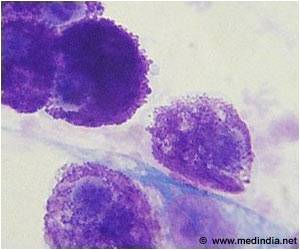E4-ORF3 clears the way for adenovirus to proliferate by deactivating genes that help the cell defend itself against the virus. This was discovered by O'Shea two years ago.

E4-ORF3 self-assembles inside cells into a disordered, web-like structure that captures and inactivates different tumor suppressor protein complexes. Horng Ou, a postdoctoral researcher in O'Shea's laboratory, says E4-ORF3 is unusual. "It doesn't resemble any known proteins that assemble polymers or that function in cellular tumor suppressor pathways," he says. "Most cellular polymers and filaments form uniform, rigid chains. But E4-ORF3 is the virus's Swiss army knife----it assembles into something that is highly versatile. It has the ability to build itself into all sorts of different shapes and sizes that can capture and deactivate the many defenses of a host cell."
In collaboration with scientists from the National Center for Microscopy and Imaging Research at University of California, San Diego, led by Mark Ellisman, the center's director, O'Shea's team used new techniques to reveal the ultrastructure of the remarkable polymer that E4-ORF3 assembles in the nucleus----something that previously had proven difficult since the polymer is effectively invisible using conventional electron microscopy. "What you see is the E4-ORF3 polymer bending and weaving and twisting its way through the nucleus," she says. "It does appear to have a single repeating pattern and creates a matrix that captures several different tumor suppressors and silences p53 target genes."
 | ||||
Source-Eurekalert









